Mount Kailash Pilgrimage Trek (Kailash Kora)
The Mount Kailash Pilgrimage Trek, also known as the Kailash Kora, is one of the most revered spiritual journeys in the world, attracting pilgrims and adventurers alike to the remote western corner of Tibet. This trek is not just a physical challenge; it's a pilgrimage that holds deep religious significance for several religions including Buddhism, Hinduism, Jainism, and Bon.
.jpg)
Key Features of the Mount Kailash Pilgrimage Trek
-
Spiritual Significance: Mount Kailash is considered the abode of Lord Shiva in Hinduism and a sacred site in Buddhism, Jainism, and Bon. Completing the Kora is believed to bring spiritual cleansing and immense merit.
-
Trekking Route: The classic Kailash Kora covers about 52 kilometers and is typically completed over three days. The trek involves walking around the base of Mount Kailash, starting and ending at Darchen, a small settlement that serves as the gateway for pilgrims.
-
Altitude and Difficulty: The trek reaches its highest point at Drolma La Pass, which is about 5,640 meters (18,500 feet) above sea level, making acclimatization a critical part of the journey. The high altitude and harsh weather conditions add to the trek’s difficulty, making it challenging even for seasoned trekkers.
-
Scenic Views: The path around Mount Kailash is surrounded by grand landscapes, featuring rugged hills, remote lakes like Lake Manasarovar, and vast open plains. The stark beauty of these terrains, combined with the spiritual aura of Mount Kailash, creates an unforgettable experience.
-
Cultural Exposure: The trek is an excellent opportunity to witness and participate in authentic Tibetan spiritual practices. Pilgrims perform rituals and offer prayers throughout the journey, particularly at significant points like the Tarboche flagpole and the sky burial site of the 84 Mahasiddhas.
-
Best Time to Trek: The ideal months for the Kailash Kora are May through September, when the weather is relatively stable and warmer, though nights can still be bitterly cold.
Preparations and Considerations:
-
Permits: All foreigners need to arrange special permits to enter Tibet and travel around the region. These are usually handled by tour operators.
-
Physical Preparation: Due to the demanding nature of the trek, physical fitness and some pre-trek high-altitude training or acclimatization are recommended.
-
Guided Tours: Given the logistical challenges and regulations in Tibet, joining a guided tour is often the best way to undertake the Kailash Kora. These tours can help manage everything from permits to accommodation and provide valuable cultural insights.
The Mount Kailash Pilgrimage Trek is much more than just a trek; it is a journey of spiritual significance and profound personal transformation, set against one of the most dramatic backdrops on Earth.
Everest Base Camp North Face Trek
The Everest Base Camp North Face Trek in Tibet offers a unique and less trodden path to the base of the highest peak on Earth, Mount Everest, known locally as Mount Qomolangma. This trek is an incredible adventure for those looking to experience the grandeur of Everest from the Tibetan side, which provides different perspectives and challenges compared to the more frequented southern route in Nepal.

Key Features of the Everest Base Camp North Face Trek
-
Route and Itinerary: The trek typically begins in Lhasa, allowing trekkers a few days to acclimatize and explore the historic city, including visits to the Potala Palace and Jokhang Temple. From Lhasa, travelers move to Shigatse and then to Old Tingri, where the actual trekking begins. The journey leads to Rongbuk Monastery and ultimately to Everest Base Camp at a height of approximately 5,200 meters (17,060 feet).
-
Scenic Highlights: The trek offers stunning vistas of some of the world’s highest peaks, including Shishapangma, Cho Oyu, and, of course, Mount Everest itself. The North Face of Everest presents a formidable and awe-inspiring view, distinct in its ruggedness and sheer scale.
-
Duration and Difficulty: The total trek can take about 12 to 14 days, including travel within Tibet and necessary acclimatization stops. The trek is considered moderate to challenging due to its high altitude, remote location, and the extreme environment.
-
Cultural Experience: Trekking in Tibet introduces adventurers to the unique culture of the Tibetan people, with visits to remote villages and monasteries. Rongbuk Monastery, near Base Camp, is particularly significant as the highest monastery in the world and a site of historical importance in Everest expeditions.
-
Best Time to Trek: The optimal months to undertake the Everest Base Camp North Face Trek are from April to June and from September to October. These periods generally offer clearer weather, stable temperatures, and less snow, making for safer and more enjoyable trekking conditions.
Preparations and Considerations
-
Permits and Documentation: Accessing Tibet and its restricted areas like Everest Base Camp requires several permits, including a Tibet Entry Permit, an Alien’s Travel Permit, and a Military Permit. These are usually arranged by tour operators as part of trek packages.
-
Guided Tours: It is compulsory to be part of an organized tour to trek in Tibet, including having a guide and a planned itinerary approved by the authorities. These tours help navigate the logistical and regulatory challenges of trekking in this region.
-
Altitude Sickness: Given the extreme altitudes, precautions for altitude sickness are essential, including proper acclimatization days and having access to altitude sickness medication.
The Everest Base Camp North Face Trek is a profound journey that not only challenges trekkers physically but also engages them with the rich spiritual and cultural tapestry of Tibet. This trek is for those who wish to see the world's highest peak from a less common perspective, offering solitude, breathtaking scenery, and a deeper understanding of the Himalayan environment and its people.
Tsurphu to Yangpachen Trek
The Tsurphu to Yangpachen Trek is an engaging journey that combines high-altitude trekking with deep cultural immersion in the heart of Tibetan spiritual life. This route offers a unique opportunity to explore the rugged beauty of Tibet while visiting historically important monasteries and interacting with local nomadic communities.
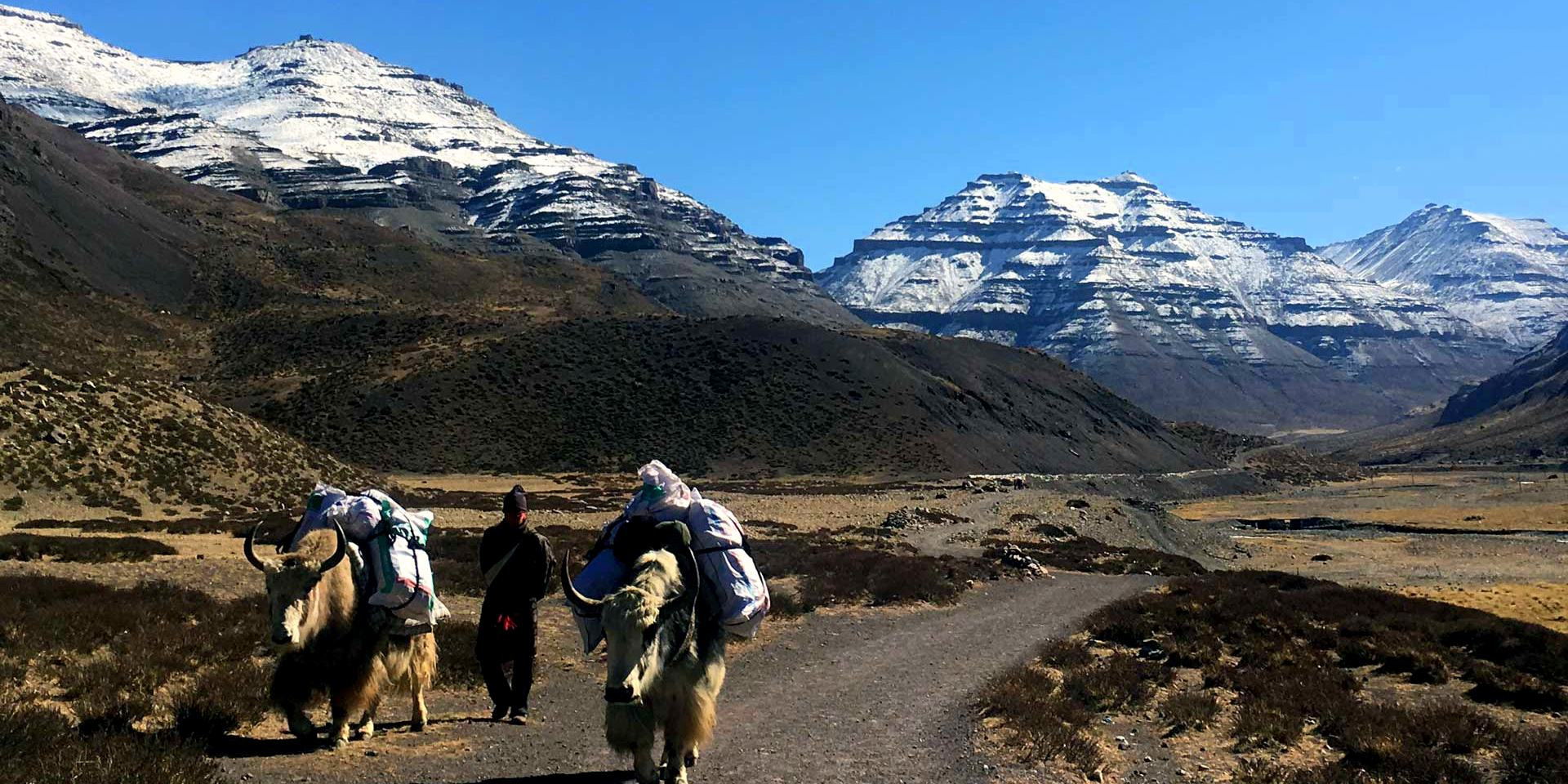
Key Features of the Tsurphu to Yangpachen Trek
-
Route Overview: The trek starts at Tsurphu Monastery, which is about 60 kilometers northwest of Lhasa. Tsurphu is the traditional seat of the Karmapa, the head of the Karma Kagyu school of Tibetan Buddhism. From Tsurphu, the trek traverses high valleys and mountain passes, including the Lasar La, reaching elevations of over 5,300 meters (17,400 feet). The trek concludes at Yangpachen Monastery, known for its hot springs, which are believed to have healing properties.
-
Duration and Difficulty: Typically, this trek is completed in 4 to 5 days, covering a distance of approximately 45 kilometers (28 miles). It is considered a moderate trek, primarily due to the altitude and some steep sections.
-
Cultural Highlights: The trek provides insight into the daily lives of Tibetan nomads and offers the chance to visit remote monasteries. Tsurphu Monastery is a center of learning and religious practice, rich in artistic and historical significance. Yangpachen Monastery adds a spiritual conclusion to the trek, surrounded by thermal activity that feeds the famous hot springs.
-
Natural Beauty: The trek offers panoramic views of the Nyenchen Tanglha mountain range and traverses through areas of lush meadows, stark mountain vistas, and geothermal fields near Yangpachen. The changing landscapes provide a stunning backdrop to the spiritual and cultural exploration.
-
Best Time to Trek: The ideal time for the Tsurphu to Yangpachen trek is from May to October, when the weather is milder, and the paths are mostly clear of snow, making for safer trekking conditions.
Preparations and Considerations
-
Acclimatization: Proper acclimatization is crucial due to the high altitudes encountered on the trek. Spending a few days in Lhasa or at a similar altitude before starting the trek is recommended.
-
Permits and Regulations: As with all travel in Tibet, foreign visitors need several permits. These include the Tibet Entry Permit, Alien's Travel Permit, and possibly others, depending on the exact itinerary. These are usually handled by your tour operator.
-
Physical Preparation: The trek is moderately challenging, so good physical health and some prior trekking experience are beneficial.
-
Local Guides: Employing a local guide not only ensures you meet all regulatory requirements but also enriches the trekking experience with insights into the local culture, history, and environment.
The Tsurphu to Yangpachen trek is an exceptional choice for trekkers looking to combine adventure with cultural and spiritual enrichment. This trek not only challenges your physical limits but also offers a profound glimpse into the heart of Tibetan religious life and its natural wonders.
Ganden to Samye Trek
The Ganden to Samye Trek is one of the most scenic and culturally significant treks in Tibet, connecting two of the most important monasteries in Tibetan Buddhism: Ganden Monastery and Samye Monastery. This trek offers a rich blend of spiritual, cultural, and natural elements, making it a must-do for those looking to dive deep into the Tibetan landscape and heritage.
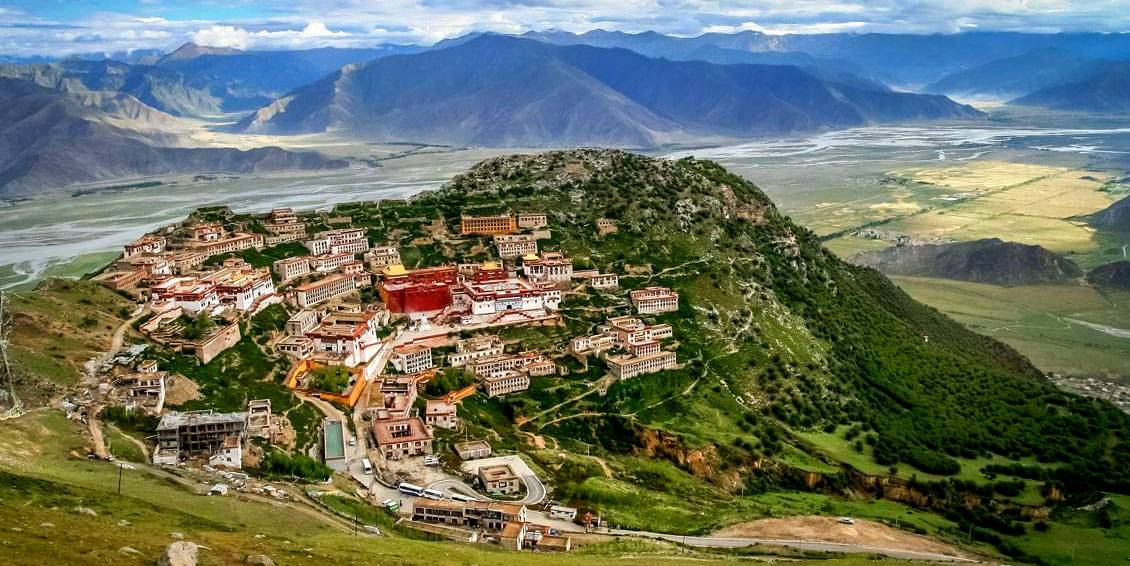
Key Features of the Ganden to Samye Trek
-
Monastic Highlights: The trek begins at Ganden Monastery, located about 45 kilometers east of Lhasa. Ganden is one of the "great three" Gelug university monasteries of Tibet. The journey ends at Samye Monastery, Tibet’s first monastery and a significant site for the introduction of Buddhism to Tibet, renowned for its unique architectural design.
-
Route and Terrain: The trek covers approximately 80 kilometers and takes about 4-5 days to complete. The path crosses several high passes, including the Shug La (5,250 meters) and Chitu La (5,100 meters), offering challenging hikes and breathtaking views. The trek descends into lush valleys and meanders through forests and barren, rocky landscapes, presenting a diverse range of ecosystems.
-
Cultural Interaction: Trekking from Ganden to Samye provides trekkers with an opportunity to interact with local Tibetan nomads and witness their daily lives, which remain closely tied to the rhythms of nature. The trek route is also a spiritual path taken by pilgrims, adding an enriching layer of religious significance.
-
Wildlife and Flora: The diverse altitudes and climates along the trek support a variety of wildlife and plant species. Trekkers might spot native wildlife such as blue sheep and numerous bird species, amidst a backdrop of dramatic mountain scenery and vibrant wildflowers during the summer months.
-
Best Time to Trek: The optimal times for the Ganden to Samye trek are from late spring to early summer (May and June) and from late summer to early fall (September and October). These periods typically provide the best weather conditions, avoiding the harsh winter cold and the rainy season.
Preparations and Considerations
-
Permits and Documentation: All foreign travelers require a Tibet Travel Permit, and depending on the areas visited, additional permits such as the Alien’s Travel Permit may be necessary. These should be arranged in advance through a tour operator.
-
Guided Trek: It is essential to undertake this trek with an experienced guide not only to navigate the challenging terrain but also to gain deeper insights into the historical and cultural context of the areas visited.
-
Physical Preparedness: Given the trek’s high passes and variable climate conditions, physical fitness and some prior trekking experience at altitude are recommended.
-
Acclimatization: Spend a few days in Lhasa or at a similar altitude to acclimatize to the high elevation before starting the trek to minimize the risk of altitude sickness.
The Ganden to Samye Trek is an exhilarating and enlightening experience that offers more than just physical challenges—it’s a journey through the heart of Tibetan spiritual life and natural beauty. For trekkers seeking a deep connection with Tibet's religious culture and rugged landscapes, this trek is unparalleled.
Namtso Lake Trek
The Namtso Lake Trek is a captivating journey to one of the most stunning high-altitude lakes in the world, offering an extraordinary blend of natural beauty, spiritual significance, and physical challenge. Namtso, or "Heavenly Lake," is located in the Tibetan plateau, standing at an altitude of over 4,700 meters (15,480 feet). It is the largest saltwater lake in Tibet and the second largest saltwater lake in China.
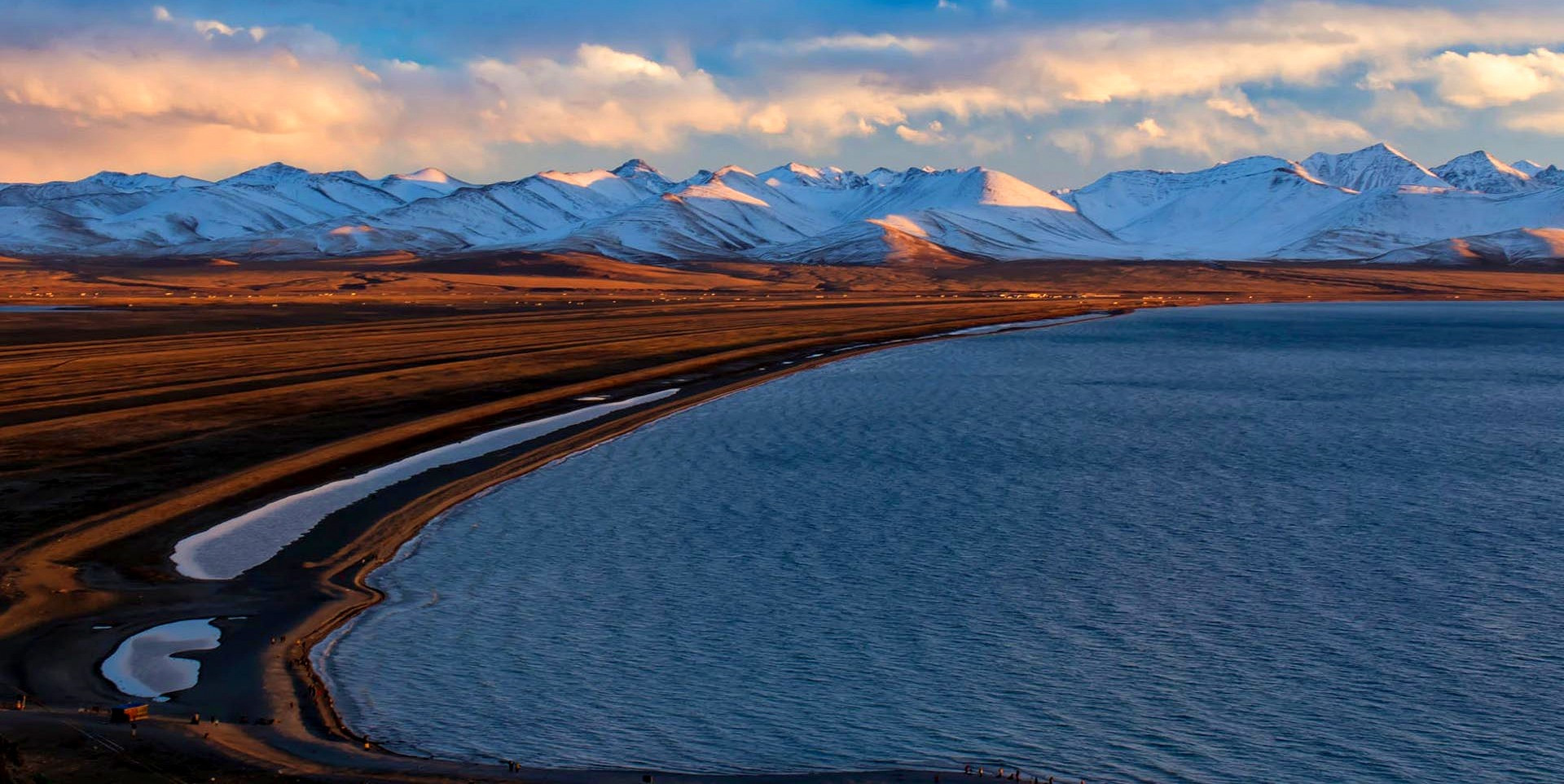
Key Features of the Namtso Lake Trek
-
Natural Splendor: Namtso Lake is renowned for its crystal-clear azure waters and the spectacular scenery of its surrounding landscape, dominated by the Nyenchen Tanglha mountain range. The vast open skies and the stark beauty of the lake make it a photographer's paradise.
-
Spiritual Experience: Namtso is considered a sacred site in Tibetan Buddhism. During the auspicious month of the Year of the Sheep, pilgrims from across Tibet trek to the lake to participate in the holy walk, a tradition that is believed to bring blessings and cleanse the soul.
-
Trekking Route: The trek to Namtso can vary in duration and difficulty depending on the starting point. Typically, it involves a drive from Lhasa to the lake, with options for extended trekking around the lake's perimeter or to nearby peaks and valleys. For those looking to trek directly to the lake, paths often traverse challenging terrain with dramatic changes in elevation.
-
Wildlife and Ecology: The area around Namtso is home to a variety of wildlife, including migratory birds, yaks, and Tibetan antelopes. The lake itself is an important bird sanctuary, providing a haven for many species during the breeding season.
-
Best Time to Trek: The best months for the Namtso Lake Trek are from May to October. During this time, temperatures are milder, and the roads are more accessible. The lake is frozen during the winter months, making trekking and access more challenging.
Preparations and Considerations
-
Acclimatization: Due to the high altitude, spending a few days acclimatizing in Lhasa or another similar elevation is crucial to avoid altitude sickness.
-
Permits: As with all travel in Tibet, visitors need to secure several permits. These include a Tibet Travel Permit and potentially additional permits depending on the specific itinerary. Arrangements are typically made through a tour operator.
-
Guided Tours: It's highly recommended to visit Namtso with a guided tour. Not only does this help with navigating the logistical and regulatory aspects of travel in Tibet, but guides also provide valuable insights into the cultural and natural history of the region.
-
Physical Preparation: Those choosing to trek in the more remote areas around Namtso should be in good physical condition and have some experience with high-altitude trekking.
The Namtso Lake Trek is a transformative journey that not only challenges the body but also offers profound peace and spiritual enrichment. It's a must-do for adventurers seeking to explore one of the most awe-inspiring landscapes on earth, where the spiritual and natural worlds converge in spectacular fashion.
Shalu to Nartang Trek
The Shalu to Nartang Trek is a fascinating and historically rich trekking route in Tibet that connects two ancient and significant monasteries: Shalu Monastery and Nartang Monastery. This trek provides a unique insight into Tibet's medieval religious and cultural landscapes, making it a less strenuous but equally rewarding alternative for those interested in exploring the region's spiritual heritage without the extreme altitude challenges of other Tibetan treks.
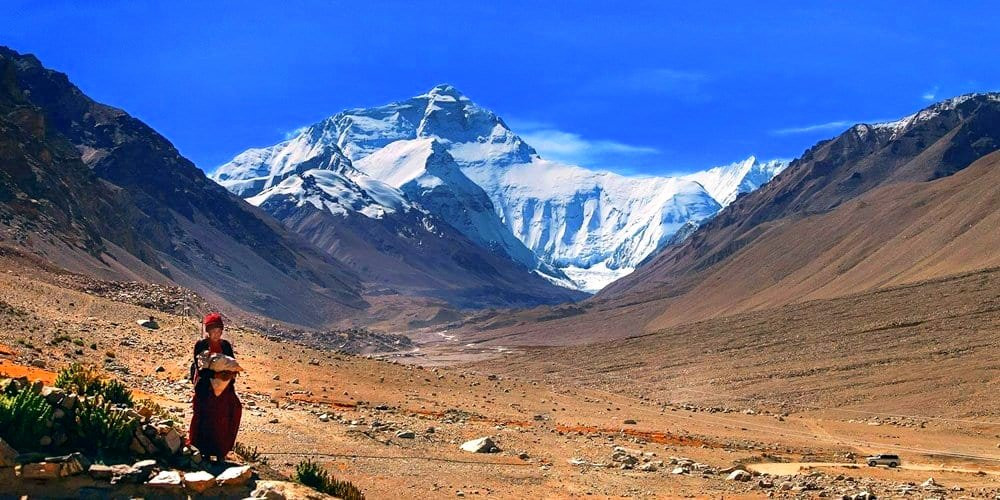
Key Features of the Shalu to Nartang Trek
-
Historical Significance: Shalu Monastery, known for its unique blend of Tibetan and Chinese architecture, was founded in 1040 and has been a center of scholarly learning and spiritual practice. Nartang Monastery, established in the 12th century, became one of the great printing centers of Tibet, disseminating Buddhist texts throughout the region.
-
Route and Distance: The trek covers a relatively short distance, approximately 15 kilometers, and can be completed in about 2 to 3 days, making it ideal for those looking for a less demanding trekking experience. The path between the monasteries is gentle and passes through small villages and farmland, providing a glimpse into the daily lives of Tibetan farmers.
-
Cultural Experience: Trekking from Shalu to Nartang is like walking through pages of Tibetan history. The route is peppered with smaller shrines, stupas, and ruins that reflect the ancient heritage and Buddhist practices of the region.
-
Scenic Beauty: The trek offers scenic vistas of the Tibetan plateau, with its wide valleys and rolling hills. The journey is especially beautiful in spring and autumn when the landscape is vibrant and the weather is clear.
-
Best Time to Trek: The most favorable times to undertake the Shalu to Nartang trek are during the spring (April to June) and autumn (September to November) months. These periods offer the best weather conditions – mild temperatures and minimal precipitation.
Preparations and Considerations
-
Permits: As with any travel in Tibet, you will need a Tibet Travel Permit and possibly additional permissions depending on your itinerary. These are typically arranged by your tour operator.
-
Accessibility: The trek is relatively easy compared to other high-altitude treks in Tibet, making it suitable for a wider range of physical fitness levels. However, general fitness is still recommended.
-
Local Guides: Hiring a local guide not only helps in navigating the trek but also enriches the experience as they share insights about the local culture, history, and religion.
-
Accommodation and Logistics: Options for accommodation along the trek are basic. It is advisable to carry necessary supplies and coordinate logistics through a tour operator to ensure a comfortable and hassle-free experience.
The Shalu to Nartang Trek is a perfect blend of cultural immersion and light adventure, suitable for those who are interested in the religious and historical aspects of Tibet without the challenge of extreme trekking. This trek offers a peaceful yet profound journey through some of the lesser-known paths of Tibetan heritage.
Health and Safety During Best Trekking Routes in Tibet
Trekking in Tibet can be a challenging and exhilarating experience, offering stunning landscapes and unique cultural insights. However, the high altitude and remote nature of the region present specific health and safety challenges that trekkers must prepare for to ensure a safe and enjoyable trip. Here are some essential tips and considerations for health and safety while trekking in Tibet:
Acclimatization to High Altitude
-
Pre-Acclimatization: Before arriving in Tibet, you can begin adjusting to higher altitudes by spending time in higher elevation areas if possible.
-
Gradual Ascent: Once in Tibet, allow several days to acclimatize in Lhasa or another city at a similar altitude before starting your trek. Ascend slowly to higher altitudes to reduce the risk of altitude sickness.
-
Recognize Symptoms: Be aware of altitude sickness symptoms, which can include headaches, nausea, dizziness, and fatigue. If symptoms appear, descend to a lower altitude immediately and seek medical help if necessary.
Health Considerations
-
Hydration: Drink plenty of water to stay hydrated. The dry, cold climate can lead to dehydration, which can exacerbate altitude sickness.
-
Sun Protection: The high altitude and thinner atmosphere mean increased exposure to UV rays. Use a high-SPF sunscreen, wear a wide-brimmed hat, and use sunglasses with UV protection.
-
Nutrition: Eat regular, balanced meals to maintain energy levels. Carbohydrates are particularly important for maintaining energy during high-altitude trekking.
Travel Insurance
- Ensure you have comprehensive travel insurance that covers high-altitude trekking and medical evacuation. This is crucial in Tibet, where medical facilities are basic, especially in remote areas.
Safety Gear and Clothing
-
Appropriate Clothing: Dress in layers to manage body temperature as weather conditions can change rapidly in the mountains. Include thermal underlayers and a windproof, waterproof outer layer.
-
Quality Footwear: Invest in sturdy, comfortable trekking boots that are well broken-in before your trip.
-
Safety Equipment: Carry essential safety gear, including a first-aid kit, a headlamp, and a map and compass or GPS device. A portable oxygen cylinder is also recommended for treks at very high altitudes.
Guides and Porters
- Employ the services of experienced local guides and porters who know the terrain and weather conditions well. They are invaluable for safe route navigation and can make critical decisions in case of emergencies.
Communication
- Carry a means of communication, such as a satellite phone, especially when trekking in remote areas where mobile phone coverage is unreliable.
Environmental Hazards
- Be aware of potential environmental hazards, such as sudden snowfalls, landslides, and avalanches, particularly in certain areas and seasons. Always check the weather forecast and consult with local guides to avoid these risks.
Respect Local Customs and Regulations
- Familiarize yourself with and respect local customs and religious practices. This includes behaving respectfully in monasteries and temples, and adhering to local guidelines for interacting with wildlife and natural resources.
By carefully preparing and considering these health and safety tips, trekkers can minimize risks and fully enjoy the breathtaking experiences that Tibet has to offer.
Tips for Best Trekking Routes in Tibet
Trekking in Tibet is an unforgettable experience, offering a unique blend of breathtaking landscapes and rich cultural immersion. To make the most of your trekking adventures in Tibet, here are several key tips to ensure a rewarding and safe experience:
Choose the Right Route
-
Match the Trek to Your Skill Level: Tibet offers a range of treks, from moderate to extremely challenging. Assess your physical condition and experience level before choosing a trek.
-
Research the Routes: Understand the specifics of each route, including duration, difficulty, altitude, and points of interest. Popular treks like the Mount Kailash Kora, Everest Base Camp North Face, and the Ganden to Samye trek offer distinct experiences.
Acclimatize Properly
-
Spend Time in Lhasa: Before starting a high-altitude trek, spend a few days in Lhasa (at 3,650 meters) or a similar altitude to acclimatize your body to reduced oxygen levels.
-
Ascend Slowly: Increase your sleeping altitude gradually, and follow the rule of ascending no more than 300-500 meters per day once above 3,000 meters.
Obtain Necessary Permits
- Travel Permits: Ensure you have all required permits for Tibet, including the Tibet Travel Permit, Alien’s Travel Permit, and any necessary military permits. These are typically arranged by your tour operator.
Hire Experienced Guides
- Local Expertise: Employ knowledgeable local guides who are familiar with the routes, weather conditions, and cultural nuances. Guides are mandatory for foreign travelers in Tibet and can greatly enhance your safety and experience.
Pack Appropriately
-
Clothing and Gear: Dress in layers to adapt to variable temperatures. Pack essential gear, including a good quality sleeping bag, insulated jacket, waterproof clothing, and sturdy hiking boots.
-
Health and Safety Supplies: Bring a first-aid kit, water purification tablets, sunscreen, sunglasses, and lip balm with SPF. Consider carrying portable oxygen for higher altitudes.
Stay Hydrated and Nourished
-
Drink Water Regularly: Dehydration can be a serious risk at high altitudes. Drink plenty of water and avoid excessive caffeine and alcohol.
-
Eat Sufficient Calories: High-altitude trekking burns a lot of calories. Ensure you consume enough food, particularly carbohydrates, to maintain your energy levels.
Respect Local Customs
- Cultural Sensitivity: Respect the local customs and religious practices. When visiting monasteries, dress modestly, and ask permission before taking photographs.
Prepare for the Weather
- Weather Checks: Tibetan weather can be unpredictable. Check the weather forecast regularly and be prepared for sudden changes, especially snow and strong winds.
Environmental Considerations
- Leave No Trace: Preserve the natural environment by carrying out all your trash, avoiding single-use plastics, and respecting wildlife habitats.
Emergency Planning
- Plan for Emergencies: Have a clear plan in place for potential emergencies, including knowledge of the nearest medical facilities and a means of emergency communication.
Following these tips can help ensure that your trek in Tibet is not only memorable but also safe and respectful of the local culture and environment. Whether you are circling the sacred Mount Kailash, gazing upon Everest, or exploring ancient monastic trails, preparation is key to a successful and enjoyable trekking experience.
Best Time for Trekking Routes in Tibet
Trekking in Tibet can be distinctly different depending on the season. Each season offers unique conditions and experiences, so here's a breakdown of what to expect for trekking in Tibet by seasons:
Spring (April to June)
-
Weather: Spring is a transition period with gradually warming temperatures. Early spring can still be quite cold, especially at higher altitudes, but by late spring, the weather becomes more pleasant.
-
Conditions: The melting snow from winter may make higher routes muddy or slightly treacherous early in the season. However, by late spring, most trails are clear, making it a good time to trek.
-
Advantages: This season offers vibrant blooming flowers and a lively natural environment as the region awakens from the winter freeze. It's less crowded compared to the peak autumn season.
-
Ideal Treks: Visiting Everest Base Camp North and the Tsurphu to Yangpachen trek are excellent choices in this season, as the paths clear up and offer good visibility and moderate temperatures.
Summer (July to August)
-
Weather: Summer in Tibet can be warm, but it is also the monsoon season. While Tibet doesn't experience as much rainfall as neighboring Nepal, occasional showers and thunderstorms can occur, especially in the afternoons.
-
Conditions: The rain can make the trails slippery and sometimes obstruct views with clouds and fog. However, the landscape is lush and green.
-
Advantages: Trekking during this time allows you to see Tibet at its most vibrant, with full rivers and verdant valleys. It's also the best time for those interested in botany or photography of flora.
-
Ideal Treks: Lower altitude treks, like the Shalu to Nartang trek, are more suitable during this time as they are less likely to be affected by adverse weather conditions.
Autumn (September to October)
-
Weather: Autumn is considered the best season for trekking in Tibet due to its stable weather and clear skies.
-
Conditions: The post-monsoon climate means dry trails and excellent visibility. Temperatures are comfortably cool, ideal for trekking.
-
Advantages: The clear air and stable weather provide some of the best mountain views, making high-altitude treks more enjoyable and safer.
-
Ideal Treks: High-altitude treks like the Ganden to Samye and Mount Kailash Pilgrimage Trek are perfect during this season due to the clear skies and minimal precipitation.
Winter (November to March)
-
Weather: Winter in Tibet is cold and dry, with temperatures often dropping well below freezing.
-
Conditions: Many high-altitude treks become inaccessible due to snow and ice. Days are short, and the cold can be severe.
-
Advantages: Winter trekking is less common, but for some adventurous trekkers, it offers a serene, crowd-free experience. The landscapes are stark but beautiful, covered in snow.
-
Ideal Treks: Lower altitude treks are more feasible, and cultural tours in cities like Lhasa where the climate is less harsh compared to the countryside.
Choosing the right season for your trek in Tibet can significantly influence your experience, with autumn generally providing the most favorable conditions for high-altitude treks, and spring and summer offering unique charms and challenges.
Trekking in Tibet offers a unique blend of spiritual, cultural, and physical exploration set against some of the most stunning landscapes on Earth. Each route, from the sacred circuit of Mount Kailash to the serene expanse of Namtso Lake, presents a unique adventure that promises deep immersion into Tibet’s rich heritage and breathtaking nature. Optimal trekking seasons—late spring and early autumn—provide the best conditions for these high-altitude journeys. As you plan, ensure you have the necessary permits, gear, and guidance to fully enjoy and respect this majestic and culturally profound region. Trekking in Tibet is more than a journey; it’s an experience that enriches the soul, challenges the body, and expands the mind.
FAQs for Best Trekking Routes in Tibet
Q: What is the best time to trek in Tibet?
A: The optimal times for trekking in Tibet are during the late spring (May to June) and early autumn (September to October). These periods offer stable weather, clear skies, and minimal precipitation, ideal for high-altitude treks.
Q: Do I need any special permits for trekking in Tibet?
A: Yes, you will need a Tibet Travel Permit to enter Tibet, along with additional permits like the Alien's Travel Permit and the Military Area Permit for certain areas. These permits are typically arranged by your tour operator.
Q: What are the most popular trekking routes in Tibet?
A: Popular trekking routes include the Mount Kailash Pilgrimage Trek, Everest Base Camp North Face Trek, Ganden to Samye Trek, Tsurphu to Yangpachen Trek, and the trek around Namtso Lake.
Q: How should I prepare for high-altitude trekking in Tibet?
A: Prepare by acclimatizing in a high-altitude area like Lhasa before your trek, staying hydrated, eating high-calorie meals, dressing appropriately, and considering altitude sickness medication as recommended by a healthcare provider.
Q: What are the physical requirements for trekking in Tibet?
A: You should be in good physical condition, as treks can involve long days, high altitudes, and rough terrain. Training for endurance and strength is beneficial, and previous high-altitude trekking experience is advantageous.
Q: Are there any cultural considerations I should be aware of while trekking in Tibet?
A: Respect local customs by dressing modestly, especially in monasteries, asking permission before taking photos, avoiding public displays of affection, and adhering to local etiquette.
Q: Can I trek independently in Tibet?
A: Independent trekking is not allowed in Tibet. You must join an organized tour or trek with a licensed guide, which ensures safety and compliance with local regulations.
Q: What should I pack for a trek in Tibet?
A: Pack layered, thermal clothing, a high-quality sleeping bag, sunscreen, lip balm, sunglasses, a first aid kit, altitude sickness medication, and enough cash since ATMs may be scarce.
Q: How can I minimize my impact on the environment while trekking in Tibet?
A: Follow "Leave No Trace" principles by carrying out all trash, avoiding disturbing wildlife, staying on trails, and using biodegradable products to help preserve Tibet's natural and cultural heritage for future visitors.
For the Nepal tour, please click here.
If you are looking for different kinds of Nepal Tours or Trekking Packages, feel free to contact us.
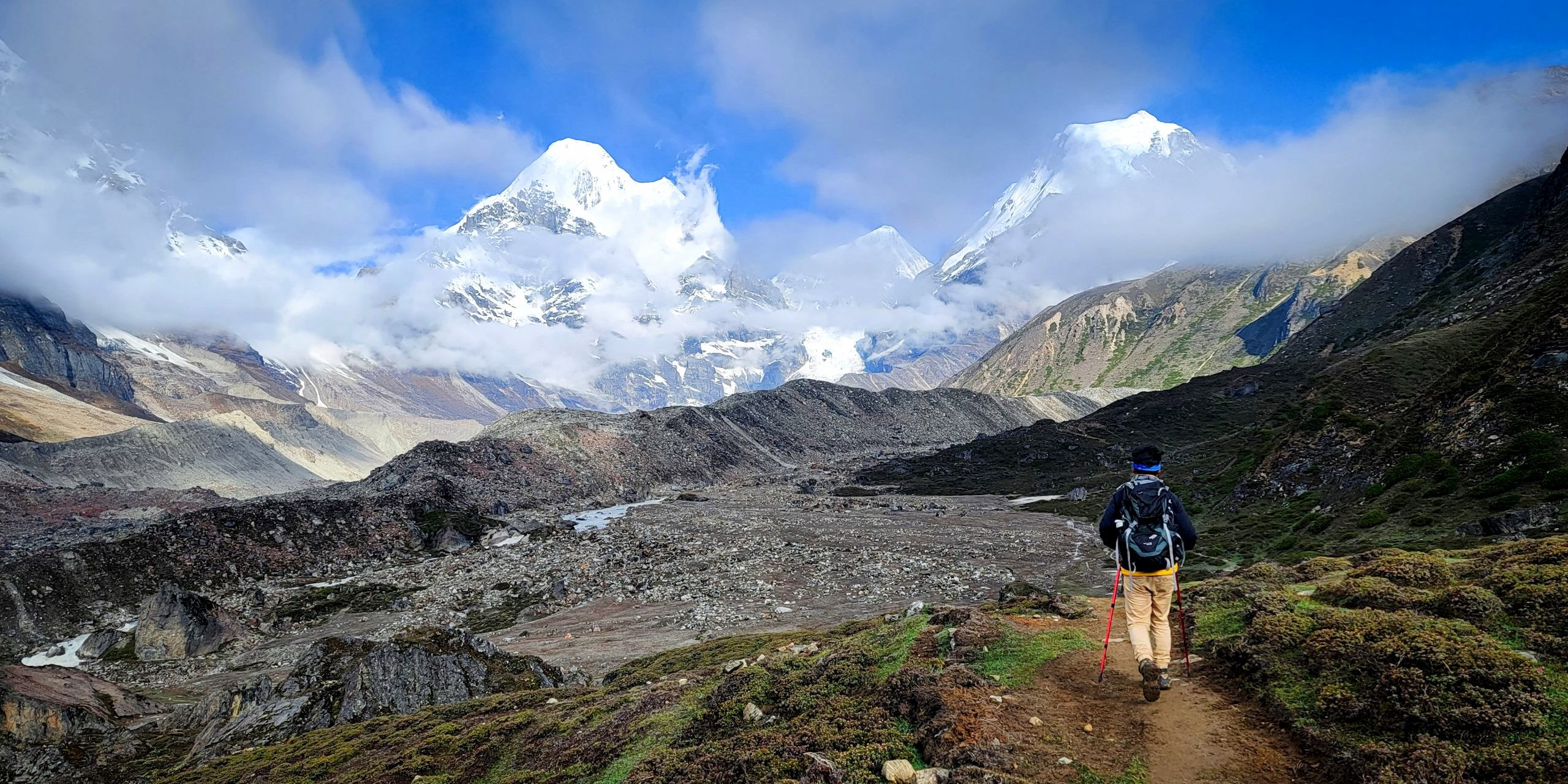

.jpg)





